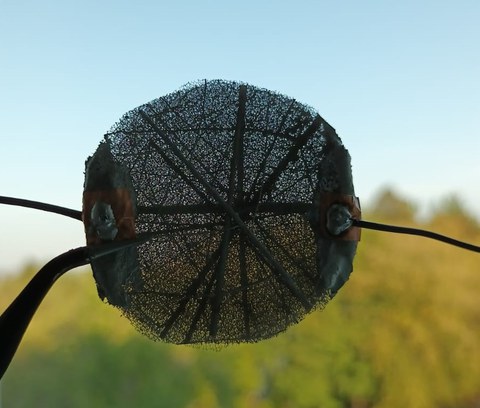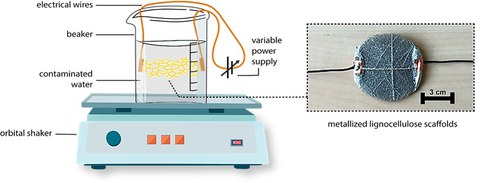Dec 03, 2024
Leaftronics reloaded: Leaf-inspired solution for sustainable water treatment
A research team led by Professor Karl Leo at Dresden University of Technology, in collaboration with the Romanian National Research and Development Institute for Industrial Ecology (ECOIND), has developed a further revolutionary application for their recently introduced “Leaftronics” technology. As the team reports in the renowned scientific journal “NJP Flexible Electronics”, they aim to use the nature-inspired “Leaftronics” design in combination with a unique metallization process for an innovative and ecological form of water treatment.
Leaf structures exhibit fractal patterns that evolved over millions of years to optimize a plant’s survival and growth. The dense, quasi-fractal networks within leaves allow for efficient water and nutrient transport from the roots to the leaves, along with the distribution of the products of photosynthesis from the leaves to the rest of the plant. “The vein structures in leaves balance the needs for transport and light absorption. Over hundreds of millions of years, leaves have found an optimum way to distribute their vein structures while minimizing the amount of sunlight blocked by these veins. The result is a natural fractal,” explains Dr. Hans Kleemann, head of the Biosense group at the Institute of Applied Physics at Dresden University of Technology.
Kleemann and his team are now using the intricate, vein-like patterns in leaves, which consist largely of lignin and cellulose (lignocellulose), and coat these natural fractals with metals such as silver and copper. It is known that silver metal, but also copper, have so-called oligodynamic properties. This means that even in very small quantities they inhibit the growth of microorganisms or may even kill them. Using a novel, environmentally friendly metallization process, the leaf structures are transformed into highly effective antimicrobial meshes that can successfully remove even stubborn pathogens such as E. coli and faecal coliform bacteria from contaminated water. “This new method of metallization avoids the use of metal nano-particles and nano-wires, as is the norm, and exclusively uses microparticles for creating the conducting coating on the lignocellulose fibers. This drastically reduces the environmental risk in terms of nanoparticle pollution. We also measured the quantity of silver ions released from our coated scaffolds into water and the values are five times lower than the allowed limit, so they seem to be ecologically sound,” says Dr. Rakesh Nair, lead author of the study. “This method, combined with a tiny voltage application of under one volt, boosts the metal’s natural antimicrobial properties, ensuring nearly 100% elimination of the tested bacteria in water.”
This system works effectively on both lab-prepared samples and real-world sources, such as municipal wastewater, making it a promising solution for clean water in contaminated regions. “We can also envision an immediate application where water needs to be stored over long periods of time in vessels (especially in dry, under-developed and arid or disaster-stricken regions), where it gets difficult to protect the stored water from fouling due to bacterial growth over time. A simple, easy to fabricate device such as this, connected to a tiny solar cell to apply a small voltage to it, might be able to keep such stored water from going bad over long periods of time,” adds Rakesh Nair.
“Our results are promising, but further development and industrial partnerships are needed for large-scale implementation. We are optimistic that, Leaftronics can eventually become a sustainable standard in environmental technology and electronics,” says Karl Leo, Professor of Optoelectronics and Director of the interdisciplinary Dresden Integrated Center for Applied Physics and Photonic Materials (DC IAPP), looking to the future.
Original Publication:
Rakesh Rajendran Nair, Mihai Nita-Lazar, Valeriu Robert Badescu, Cristina Iftode, Jakob Wolansky, Tobias Antrack, Hans Kleemann & Karl Leo. Metallization of leaf-derived lignocellulose scaffolds for high-performance flexible electronics and oligodynamic disinfection. npj Flex Electron 8, 66 (2024). https://doi.org/10.1038/s41528-024-00353-9
Contact:
Prof. Karl Leo
Institute for Applied Physics
DC IAPP
Dresden University of Technology
Email:
Tel. +49 351 463-34389
Dr. Rakesh R. Nair
Institute for Applied Physics
Dresden University of Technology
Email:


